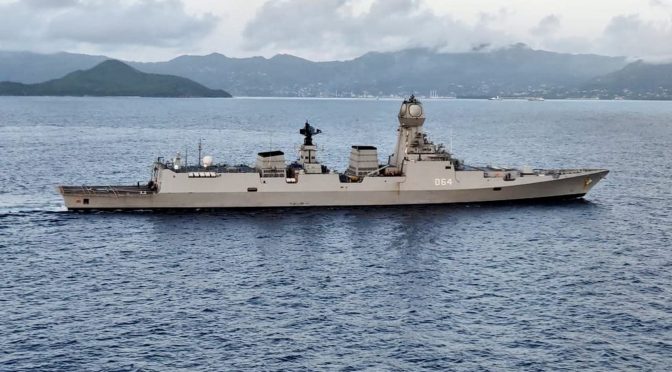Regional Strategies Topic Week
By David Scott
Setting the Scene for 2020
Indian strategy for the Indian Ocean revolves around retaining preeminence across the body of water, tacitly seen as India’s Ocean; a term implying if not hegemony, then at least a sort of regional leadership and regional preeminence. The External Affairs Minister Subrahmanyam Jaishankar was explicit at the Indian Ocean Conference held in the Maldives in September 2019 that India’s “core interests are in Indian Ocean,” that “the fact remains that where India can really make a difference is in the Indian Ocean itself,” and that the Indian Ocean is for India “a natural arena for its influence and of overriding security consequence.” Jaishankar went on in March 2020 to argue in a speech titled “Emerging Geopolitical Landscapes” that “where maritime security is concerned, India has emerged as a key player, especially in the Indian Ocean.”
Indian strategy in and for the Indian Ocean during the 2010s has been threefold: building up its naval-maritime infrastructure (bases and support facilities), building up power projection assets, and strengthening relations with increasingly China-concerned powers.
Indian strategy for the Indian Ocean during the 2010s has involved building up its naval infrastructure out from the Indian subcontinent. This has involved development of military facilities on the Lakshadweep archipelago off the western coast, but even more so on the larger Andaman and Nicobar archipelago on the other eastern side of the Bay of Bengal at the head of the Malacca Strait.
This has also involved support facilities with sympathetic partners like Oman (Duqm), Iran (Chabahar), Madagascar, Mauritius, and Singapore. A common sub-theme is India trying to avert Chinese penetration of Indian Ocean micro-island states and littorals, where China’s Maritime Silk Road (MSR) is considered by Delhi as detrimental to Indian interests. In that vein, the Indian Navy has established Joint Exclusive Economic Zone surveillance exercises with the navies of the Maldives, Seychelles, and Mauritius; and Coordinated Patrols (CORPATs) with the navies of Bangladesh, Myanmar, Thailand, and Indonesia.
Indian strategy for the Indian Ocean during the 2010s also involved building up its naval assets, headed by aircraft carriers and nuclear submarines. The Indian Navy currently operates one aircraft carrier, INS Vikramaditya (a refurbished Soviet carrier), while the second, INS Vikrant, is under construction in Cochin, ready to commence her basin trials in September 2020, due for delivery in 2021, and active commissioning expected in 2022. Both vessels have a displacement of around 45,000 tons each. A third aircraft carrier, INS Vishal, a 65,000-ton giant with 54 aircraft, is envisaged for the longer term. India’s Navy chief Admiral Karambir Singh reiterated in December 2019 that the force’s long-term capability planning envisaged the induction of three aircraft carriers so that two are continuously available for deployment in the Indian Ocean Region, one by the Western Command, and one by the Eastern Command. The Indian Navy is expected to push for a grant of Acceptance of Necessity (AoN) clearance for the third carrier, the IAC- 2, soon.
This building up of India’s naval assets represents internal balancing. Yet the navy’s share in the defense budget declined from an 18 percent high in 2012 to a lower 13 percent by 2019-2020. Due to recent budget constraints, the requirement of 200 ships has been brought down to 175. Moreover, in February 2020 Chief of Defence Staff General Bain Rabat indicated that in competitions for resources the acquisition of new submarines might take priority over aircraft carriers.
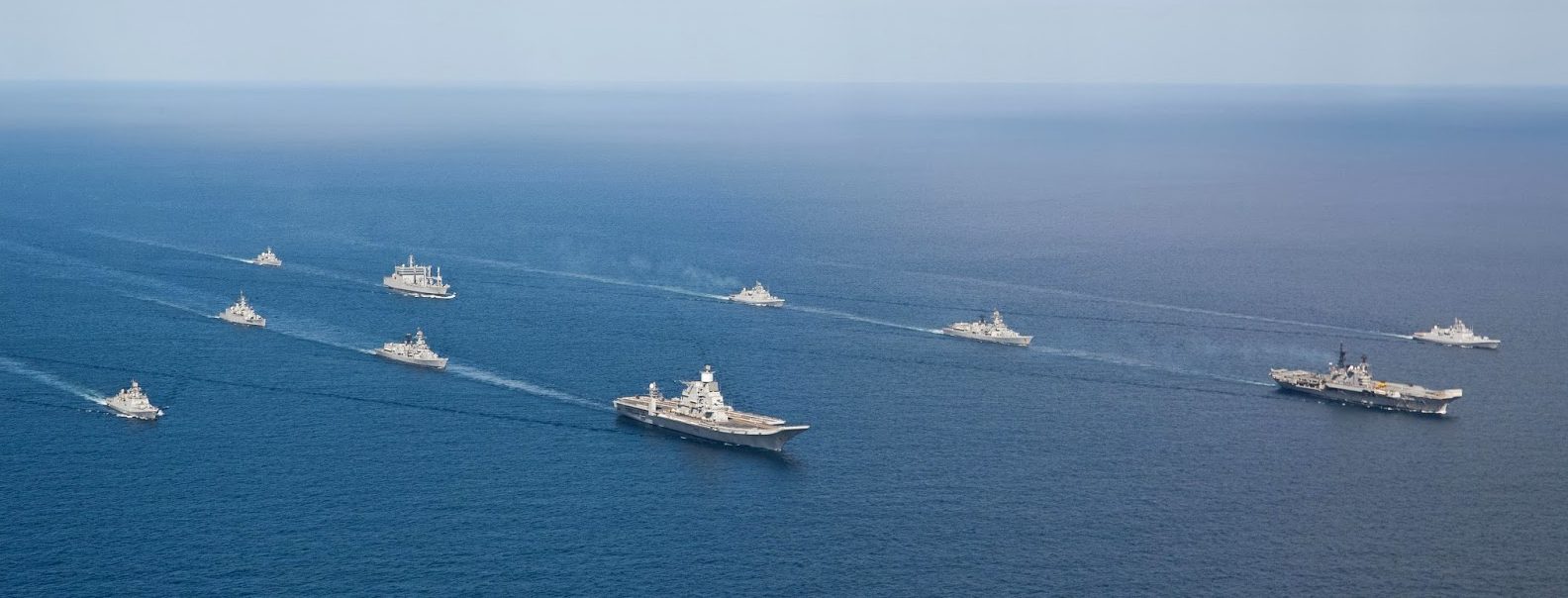
Thirdly, Indian strategy for the Indian Ocean in the 2010s involved strengthening cooperation in the Indian Ocean with other significant external (U.S. and Japan) and internal (France, Australia, and Indonesia) actors. Diplomatic milestones for this line of effort include:
- India-U.S.: Joint Strategic Vision for the Asia-Pacific and Indian Ocean region (January 2015)
- India-France: Joint Strategic Vision of India-France Cooperation in the Indian Ocean (March 2018)
- India-Indonesia: Shared Vision of India-Indonesia Maritime Cooperation in the Indo-Pacific (May 2018)
All three elements of India’s maritime strategy are implicit levers to constrain and manage the otherwise growing Chinese presence in the Indian Ocean. This implicit leverage was demonstrated at the start of 2020 at the Raisina Dialogue, held January 14-16, which included a panel titled “Fluid Fleets: Navigating Tides of Revision in the Indo-Pacific.” On the panel, India’s Chief of Naval Staff Karambir Singh sat alongside Australia’s Vice Chief of the Defence Force, Vice Admiral David Johnston, Japan’s Chief of Staff, General Koji Yamazaki, France’s Deputy Director of Strategy at the French Ministry of the Armed Forces, Luc de Rancourt, and the U.K.’s Chief of Naval Staff, Admiral Tony Radakin. At that discussion, Admiral Singh noted of China that “they have seven to eight warships in the Indian Ocean at any given time [.…] We are watching. If anything impinges on us, we will act”; to which he gave the then-recent example of the Indian Navy escorting Chinese ships out of their sensitive Exclusive Economic Zone (EEZ) around the Andaman and Nicobar Islands in December 2019.
During 2020, two unexpected events signally affected India’s maritime strategy in the Indian Ocean. In retrospect it was no surprise that the biannual Naval Commanders’ Conference held in August 2020 particularly focused on the entry and operations of “extra-regional” forces (read: China) in the Indian Ocean Region, and operational procurements. The Ministry of Defence said that the Commanders Conference “assumes greater significance in the backdrop of recent events on our northern borders [Galwan] and the unprecedented challenges posed by the COVID-19.” Both of these issues are affecting India’s maritime strategy for the Indian Ocean.
COVID-19 and Its Impact
COVID-19 first hit India in January 2020, with national lockdowns introduced in March, but cases were still spreading rapidly. Current figures recorded in late September listed India as having 5,487,580 confirmed cases, second only to the U.S.’ 6,883,931. India’s confirmed COVID-19 deaths number at 87,882 (third behind U.S.’ 200,710 and Brazil’s 136,895). The resulting impact of COVID-19 on Indian maritime strategy for the Indian Ocean has been fivefold.
Firstly, it disrupted basin trials of India’s second aircraft carrier, INS Vikrant, due in September 2020, with commissioning now delayed until September 2021. Secondly, Indian regional naval diplomacy was disrupted as the biannual MILAN itineration, due to be held in March 2020, was cancelled. In one sense this was a setback for Indian naval diplomacy, yet after a record number of invites (41, but not including Pakistan or China) and acceptances (over 30), it still showed India’s increased status in the Indian Ocean in 2020.
COVID-19 also meant that the INDRA exercises with Russia in September 2020 were restricted to at-sea only. Nevertheless, India’s readiness (matched by Russia) to deploy two warships and a supply tanker in the Bay of Bengal indicated India’s natural focus and locational advantage in these waters. They also were subtle message for China that its close links were not exclusive, and that China could not necessarily rely on Russia in any China-India conflict.
The pandemic enabled India to extend COVID-related assistance to various Indian Ocean states. This was on show in June 2020 with Mission Sagar, which India claimed was “a major milestone in India’s engagement with Indian Ocean region countries.” There, the landing ship INS Kesari was sent to the Maldives, Mauritius, Comoros, Seychelles, and Madagascar, complete with teams of healthcare professionals, medicines, and food onboard to help with pandemic response. Meanwhile, India’s naval might was on show in Operation Samudra Setu (Sea Bridge), in May 2020. There, INS Jalaswa and INS Magar, dispatched from India’s Southern Command at Kochi and escorted by other warships of the Western Fleet, brought back over 600 COVID-threatened Indian citizens from the Maldives.
Structurally, India slid into marked economic downturn as the COVID-19 pandemic accelerated during summer 2020. Its economy shrank 23.9 percent year-on-year in the second quarter of 2020. A 4.2 percent GDP growth for 2019-2020 (in slow decline since January 2018) is already set to be replaced by a negative 3.2 percent figure in 2020-2021. The result is that India’s capitalization program is under threat, and the drive to initiate a three-aircraft carrier program is threatened with delay at best and cancellation at worst.
Galwan and its Impact
The second major challenge facing India in 2020 was deadly confrontation with China. This was sharpest at the Galwan Valley, where China objected to Indian moves up the valley. Confrontation between forces escalated in mid-June 2020, with 20 Indian soldiers reported as killed in direct fighting with Chinese troops.
Eventual pullbacks of forces were halting and uneasily carried out in late July, but with further warnings coming from India on August 30. The Foreign Ministers’ joint press statement released by Jaishankar and Wang Yi may have had a five-point plan of action, but hardly represents something new, and left vague calls for “new confidence building measures” without any substance. Yet clearly India’s focus firmly remains on its land frontier, and the swathe of confrontation points that have opened up. The Indian Parliament was updated by Defence Minister Rajnath Singh on September 15:
“As of now, the Chinese side has mobilized a large number of troops and armaments along the LAC as well as in the depth areas. There are several friction areas in Eastern Ladakh including Gogra, Kongka La and North and South Banks of the Pangong Lake. In response to China’s actions, our armed forces have also made appropriate counter deployments in these areas to ensure that India’s security interests are fully protected.”
However, the extended confrontation and continuing standoff at Galwan has had an ambiguous two-fold impact on Indian strategy for the Indian Ocean. On the one hand this has contributed to a further deterioration in India-China relations, both at the government level, and in terms of wider public opinion. China’s growing presence in the Indian Ocean is all the more perceived in India as a threat to Indian interests, and part of a disadvantageous encirclement policy by China and an increasingly encircled position for India. On the other hand, the extended land confrontation and growing friction along the Himalayas reinforces a landward imperative and encourages reinforcement of India’s army and air force presence along its northern flank, which could come at the expense of naval acquisitions.
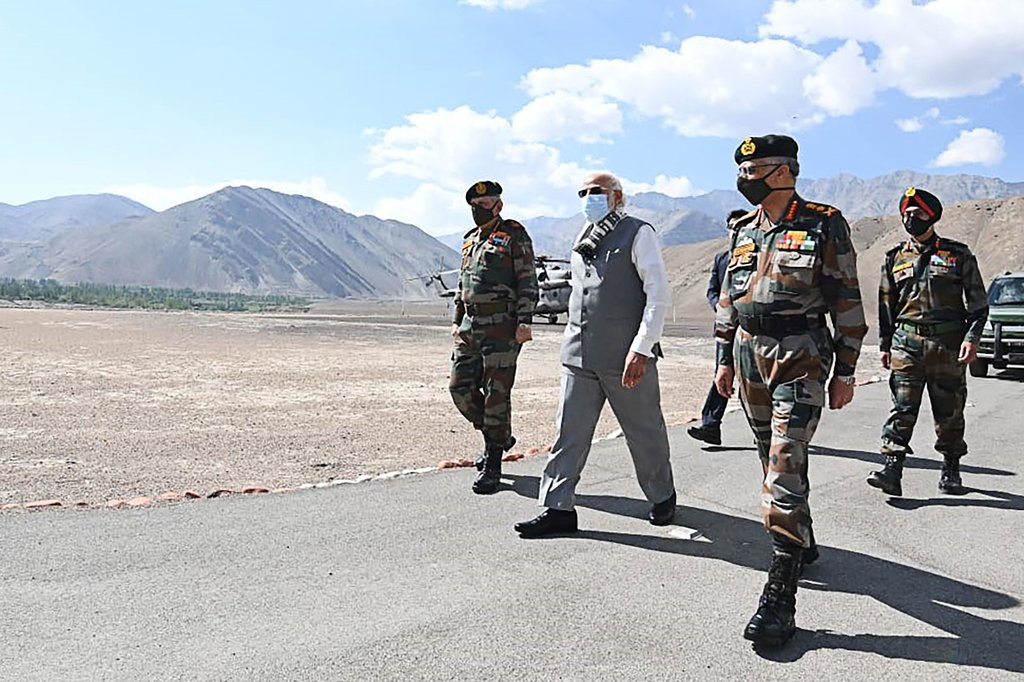
In the wake of Galwan, India has accelerated weapons purchases. India’s Ministry of Defence announced on July 2 that “in the current situation and the need to strengthen the Armed Forces for the defence of our borders” arms procurement projects worth U.S.$5.55 billion were approved. These included long-range land-attack missile systems with a range of 1,000 kilometres and Astra missiles featuring beyond visual range capability. Both “will bolster the attack capabilities of the Navy,” and “will serve as a force multiplier and immensely add to the strike capability of the Navy.”
The Indian Navy argument is that Chinese aggression in the Himalayas generates the need for a stronger Indian position in the Indian Ocean, in the face of related Chinese expansion there. Even as India reinforced its troop levels on its northern flank, simultaneously in the wake of Galwan, India’s navy was deploying more actively and dispatched in greater strength around the Malacca Strait. The navy thereby demonstrating India’s potential to threaten China’s sea lines of communication, the so-called Malacca Dilemma facing Beijing. The Indian Navy has also been pushing a sense of urgency for “Acceptance of Necessity” (AoN) for a third aircraft carrier, which has been pending since 2015.
Certainly, India has immediately sought to strengthen its own position in the Indian Ocean, through an extra focus on the Andaman and Nicobar Islands. The geopolitical and military value of the Andaman and Nicobar Islands remain tangible. In conjunction with the Indian littoral and the Eastern Command at Vishvakapman, India’s possession of the Andaman and Nicobar Islands provides a firm enclosure of the Bay of Bengal, and a chokepoint onto the Malacca Strait.
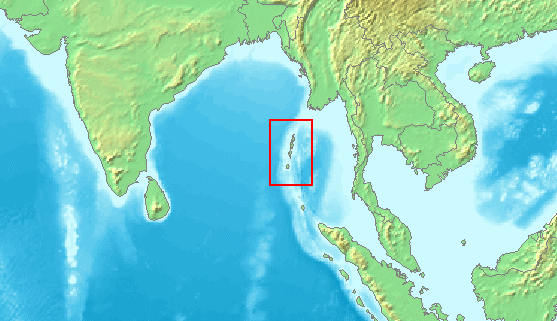
Consequently, exercises in which several destroyers and frigates were joined by maritime patrol aircraft were conducted around the Andaman and Nicobar Islands in July 2020. Headed by the Eastern Command naval chief Rear Admiral Sanjay Vatsayan, units came from the Andaman and Nicobar Command (ANC), the Eastern Naval Command, and with some warships deployed near the Malacca Strait also taking part. Submarine hunting Poseidon-8I aircraft, complete with Harpoon Block-II missiles, torpedoes, rockets, and depth charges were dispatched from their base at INS Rajali naval air station in Arakkonam (Tamil Nadu). They were seen as sending “a signal to China” according to the Times of India on July 18.
Prime Minister Narendra Modi made a point of visiting the Andaman and Nicobar Islands in August 2020. This marked a explicit focus on the strategic importance of these islands by Modi:
“The Indian Ocean has been the centre of India’s trade and strategic prowess for thousands of years. Now that India is following the new policy and practice of trade and cooperation in Indo-Pacific, the importance of our islands including Andaman and Nicobar has increased further.”
Extending Strategic Cooperation in the Indian Ocean with France, Japan, Australia, and the U.S.
A tacit development since Galwan has been a push by India to strengthen its partnerships with other powers operating in the Indian Ocean that also have concerns about China’s assertiveness.
India’s support from the U.S. in the Indian Ocean continued to strengthen in 2020. India was more than happy with U.S. endorsement in February 2020 in their Strategic Convergence in the Indo-Pacific (part of their “Vision and Principles” Joint Statement) that “the United States appreciates India’s role as a net provider of security, as well as developmental and humanitarian assistance in the Indian Ocean Region.” The term “net provider of security” describes India as taking a leading regional role and providing security for others beyond India’s own immediate needs. Delivery of advanced American-made Sikorsky anti-submarine helicopters, with China in mind, was accelerated in May 2020. July 2020 also witnessed naval drills with the Nimitz Carrier Strike Group in the Andaman Sea.
India’s relationship with France has also deepened. The two navies conducted joint patrols around Reunion in March 2020. These joint activities with France represent an operationalization of the Logistics Support Agreement (LSA) that India signed with France in 2018. The LSA has expanded the presence and the type of naval operations that the Indian Navy is able to undertake in the Southwestern Indian Ocean, given that France has military facilities on the islands of La Réunion, Mayotte, and the French Southern and Atlantic Lands – all of which could now be used by India. India can also now tap into France’s base at Djibouti. This in effect further extends India’s strategic footprint and effective area of operation in the Indian Ocean further southward and westward.
June 2020 saw Indian Navy ships INS Rana and INS Kulish exercising with the Japanese Navy ships, JS Kashima and JS Shimayuki. A significant logistics development was the Acquisition and Cross-Servicing Agreement (ACSA) signed in September 2020 between India and Japan. This will enable closer cooperation with Japan in the Indian Ocean, with Japanese access to the Andaman and Nicobar islands being likely, reciprocated with Indian access to Japan’s base at Djibouti.
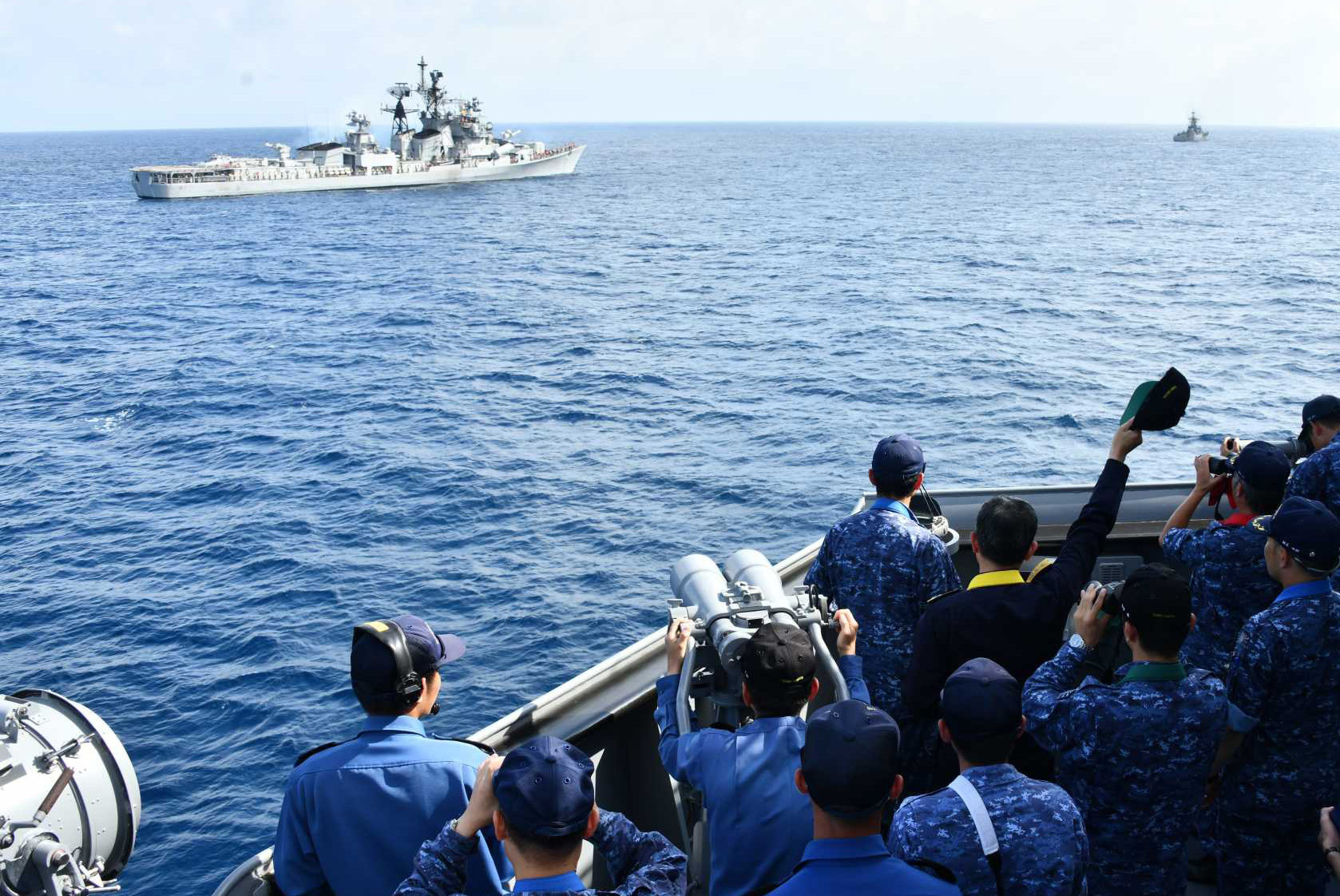
Relations with Australia moved forward noticeably in 2020. Their summit in June 2020 witnessed their joint Shared Vision for Maritime Cooperation in the Indo-Pacific. It also witnessed their Mutual Logistics Support Agreement (MLSA). From India’s point of view this enables Indian use of military facilities on Australian territory in the Eastern Indian Ocean, notably Christmas Island and Cocos Island. This in effect further extends India’s strategic footprint and effective area of operation in the Indian Ocean further eastward. INS Sahyadri and INS Karmuk also carried out anti-air bilateral exercises with the Australian Navy in the eastern Indian Ocean in September.
India has also further strengthened its strategic position in the Indian Ocean with two new trilaterals.
The first India-France-Australia trilateral dialogue was held in September 2020. Harsh Vardhan Shringla, Foreign Secretary of India, met French and Australian counterparts, held virtually due to the pandemic. Their stated focus was “economic and geostrategic challenges and cooperation in the Indo-Pacific,” explicitly with regard to the pandemic, but also implicitly with regard to China. Their mutual support for the Indian Ocean Regional Association (IORA) and the Indian Ocean Commission (IOC) was stated, as was their common focus on “synergizing their respective strengths to ensure a peaceful, secure, prosperous and rules-based Indo-Pacific region.” The advantage for India in this new minilateral is that it reduces naval dependence on just cooperation channeled via the United States.
Another new minilateral in the offing. In early September it was announced that External Affairs Minister Jaishankar would be meeting for an upcoming meeting with his Indonesian and Australian Foreign Minister counterparts, with agreement set on maritime cooperation in the Indian Ocean.
A final impending effect of India’s confrontation with China at Galwan is a sense of India now withdrawing its previous hesitations over allowing Australia to participate in the trilateral MALABAR naval exercises currently held between India, the U.S., and Japan. The expected invite to Australia for the next MALABAR exercise in the Bay of Bengal, in Fall 2020, represents Indian acceptance of the so-called “Quad” taking on some military dimensions.
Conclusion
Paradoxically, though COVID-19 has weakened India’s economic ability to fund its naval infrastructure and assets program for the Indian Ocean, it has enabled India to strengthen its links with Indian Ocean micro-states through the humanitarian assistance delivered by the navy. Meanwhile, land confrontation with China at Galwan has encouraged India to deepen its military links with other maritime powers operating in the Indian Ocean. In an unstated but evident balancing fashion, this is enabling India to improve its maritime position in the Indian Ocean vis-à-vis China.
David Scott is an associate member of the Corbett Centre for Maritime Policy Studies. A prolific writer on maritime geopolitics, he can be contacted at davidscott366@outlook.com.
Featured Image: Indian Navy destroyer INS Kochi enters Port Victoria, Seychelles. (Photo via Indian Navy spokesperson Twitter)

